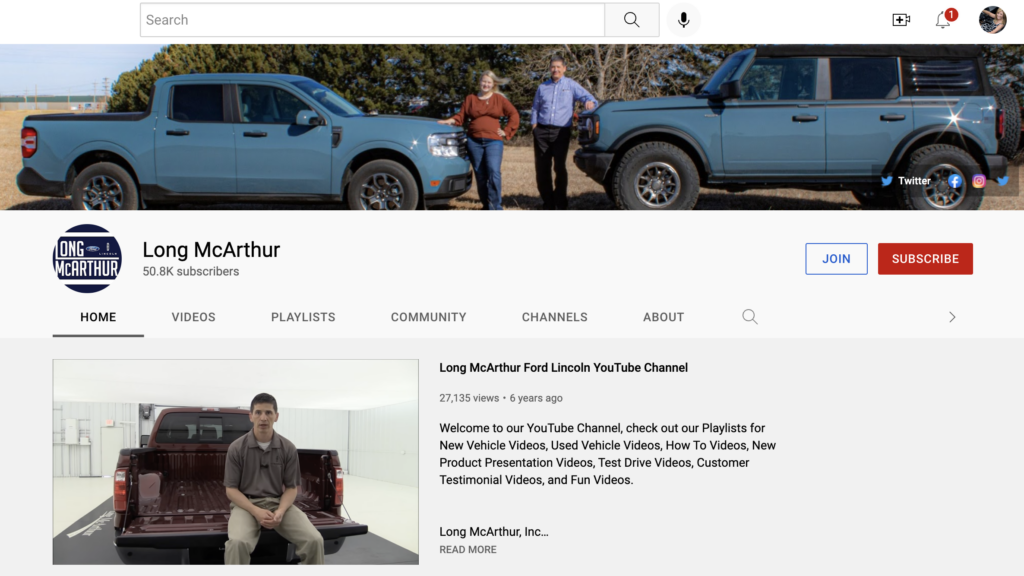 Many organizations are lagging behind when it comes to meeting their potential customers’ needs online. Customers are switching between various sales channels, expecting seamless integration across touchpoints and through multiple devices. Social selling tactics applied to the sales process can support these new consumer preferences.
Many organizations are lagging behind when it comes to meeting their potential customers’ needs online. Customers are switching between various sales channels, expecting seamless integration across touchpoints and through multiple devices. Social selling tactics applied to the sales process can support these new consumer preferences.
Depending on where you are in the country, some or all of your sales process is being disrupted. It’s a new challenge for companies to control the customer experience in this omni-channel context and customers are in the driver’s seat.
Today’s complexities in lead handling and response
For example, lead response process is a good indicator of a car dealership’s ability to serve its customers. A few years ago (2014), ADLittle investigated dialogue ability in terms of the average response time for customer inquiries in the retail automotive sector. Most customers expect 24/7 response time and although dealers were mitigating the gap with an average response time of 9.2 hours, this was a significant mismatch when discussing possible ways to improve lead conversion and getting ready for the launch of online car sales.
Today’s lead handling process is more complex and thereby begs for closer consideration. By monitoring lead handling indicators like social media, direct messages, CRM utilization, missed calls, follow-up response time, and close rate, you can improve the overall buying experience and sell more cars.
But even with all the threats to the dealership sales model, and clear data from consumers about car buying preferences:
- 23.5% of the average dealer’s leads are flagged for not receiving follow-up within 24 hours
- 67.3% of these flagged sales leads do not receive follow-up within 1 week or longer
Studies have shown that 70% of customers appreciate getting advice at a location of their choice (ie: social channels). For the most part, retailers are not interested in a conversation around the sale of their product, unless it’s the forum they choose.
Today’s digital marketplace provides the information customers seek and it’s readily available anytime they choose. The key here is choice. Consumers are in the driver’s seat and if they choose to research their purchase online, then you and your salespeople need to meet them where they are, in the place they prefer. Meeting the customer on their terms is social selling.
A great example of meeting the customer on their terms is Tim Bartz, #FordVideoGuy. Tim has built rapport with his online and offline community, growing his dealership’s YouTube channel to over 50,000 subscribers. He utilizes Reddit(!) and has a podcast. He uses these platforms to educate and support customers in their purchase journey and positions himself as the likable expert that people can rely on for trustworthy advice. Long McArthur Ford (in the middle of a farming community in Kansas) is the #1 super-duty dealer.

We’ve entered the age where the car buyers’ purchase journey must be transparent and autonomous.
Consumers are telling us this not by their words but by their actions. They go to great lengths to find out everything they can from anyone they know and trust before they interact with you.
The more you require in-person interaction during the research process, the more boundaries you create closing the sale.
For many consumers, visiting a car showroom has lost its appeal. They prefer the convenience of digital interactions. Google search trends suggest some 60% of car buyers under the age of 45 are likely to purchase their next car online and are interested in contactless sales and services.
Many retailers and by extension their salespeople are not providing these expected dialogue capabilities, especially when it comes to the eventual closing of the sale. The current sales approach of one-way communication is not matching emerging customers’ needs.
Of course, this doesn’t mean that your sales channel or retail presence perishes, but it does mean that you have to shift your processes to accommodate a new type of buyer.
Social selling tactics to convert the hyper-aware and hyper-informed consumer
Automotive social selling – a technique used by car salespeople to laser-target their prospecting and establish rapport through existing connections – has many beneficial outcomes. The obvious benefit is acquiring more referrals, leads and sales.
But now that the traditional automotive retail model is under pressure, social selling is becoming crucial to sustain sales relationships.
Fundamental shifts in buying behavior have major implications for retailers. Given these remarkable changes in consumer preference, profits could be at risk when shoppers can’t choose their own paths to purchase.
1. Weave social selling techniques into your sales process.
Integrate social selling throughout the purchase cycle and especially in the lead up to the sale.
- Make sure each salesperson can articulate the unique value they bring to the organization. This can be done through training but also by incorporating a professional bio written with a focus on highlighting each salesperson’s standout attributes and expertise.
- Ensure your salespeople are trained and proficient in the art of networking. They should possess the ability to comfortably participate in online conversations including social media comment threads.
- Provide information and training on how to build rapport with online connections and when to move the sales conversation offline and into the showroom.
- Encourage salespeople’s participation in the organization’s content creation.
- Maintain ongoing social selling support such as basic videography training, and the possible addition of a dedicated video studio/converted office.
2. Illustrate expertise by providing outside-the-box knowledge
I’ve already mentioned Tim Bartz #FordVideoGuy and his techniques are something your organization can emulate. Going the extra mile for the customer doesn’t just happen on the showroom floor. Today, you’ll stand out by being helpful, transparent and knowledgeable about the products you sell.
Car buyers spend the bulk of their research time online and it’s your job to make sure they get the right information in all the places they’re searching for it.
If you’re wondering where to start, you already have a wealth of ideas within your organization. Employees on the front lines with your customers know the information they’re seeking. Employees know the questions customers aren’t asking but need to know. The goal is to be helpful. Let customers ask you questions, no matter what their intent is. Tim became “known” because he freely provides product information and car buying tips on social media.
If you’re not sure and need a kickstart, the 5 most valuable questions to answer in social selling are:
- Cost/Price questions
- Problems/issues/concerns questions
- Versus/comparison questions
- “Best” questions
- Review/opinion-based questions
As your salespeople become proficient in creating and publishing content, people within their network will notice. Quality content fosters trust and this is perhaps the single most valuable component of social selling. Trustworthy information from within a trusted network allows you to cultivate leads.
3. Listen and build rapport
Most consumers are using social media. It’s where they go to talk about their experiences before, during and after the sale.
The social selling tactic of listening allows you to harness the power of human-to-human interactions. People are more likely to buy from people they know, like and trust. But liking and trusting someone is harder if you don’t build a connection first. Too many salespeople are sabotaging their opportunities for success from the very start, because they’re not practicing this key approach to social media.
Instead of jumping right into sales jargon and spammy behavior, make your own noise and stand out from the crowd by setting up a system to generate high-quality referrals from as many sources as possible using your content as the catalyst (like Tim does).
The importance of building rapport is that it establishes trust between you and your connections. Your actions create an environment where the customer knows you’re listening.
The key to effective social selling is forming relationships based on trust in an atmosphere of generosity and selflessness. Social media was made for this and it’s time for you to take advantage of it. Don’t let your competitor suck all the air out of the room – make some noise!
Would you like to learn how to market yourself on social media? Get my FREE Guide: 20 Automotive Social Selling Techniques for More Leads and Sales
